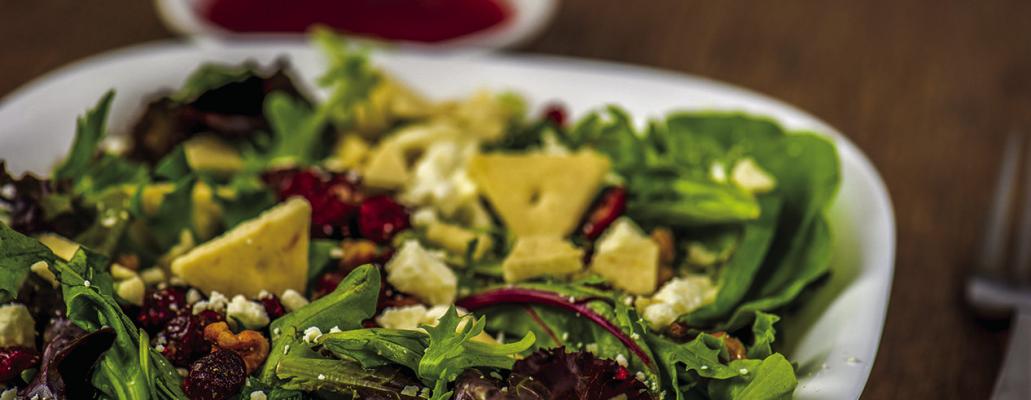Nitrate Confusion
If you’re confused about consuming nitrates, you’re not alone.
Many studies suggest that nitrates benefit cardiovascular health; other studies suggest they may increase cancer risk.
Nitrates are naturally present in many leafy greens, such as arugula and other vegetables; meats, especially processed meats; and drinking water, and they have been shown to reduce cardiovascular risks. However, previous research linked nitrates to increased risk of some cancers.
Researchers conducted an analysis of studies investigating the benefits and risks of dietary nitrates. That study was published recently in Trends in Food Science and Technology.
First a little history. In 1976, two studies showed that nitrates can form N-nitrosamines, which are highly carcinogenic in lab animals and linked to cancer in humans. Based on those studies and others, guidelines were given to limit nitrate intake from foods such as processed meats.
However, other research suggests that vegetables high in nitrates may protect against cardiovascular disease. A 2016 study in the Journal of the American Heart Association looked at dietary nitrate and cardiovascular disease and concluded that the cardiovascular protective effect of a diet rich in fruits and vegetables may be attributed in part to its high nitrate content, mostly from leafy green vegetables and root vegetables. Researchers wrote, “The high fruits and vegetable diet may offer the cardiovascular benefits of enhanced nitric oxide production while conferring protection from formation of N-nitrosamines.” They added that the high levels of nitrate in drinking water or dietary supplements are of more concern because of possible isolated ingestion without the protective dietary components found in a complex vegetable matrix.
More recently, a team of researchers from Edith Cowan University in Australia reviewed studies investigating the health benefits and disadvantages of dietary nitrates. They concluded that evidence is insufficient to say that nitrates in food and water are carcinogenic and more studies are needed. Nitric oxide plays a key role in the body, including blood pressure regulation and heart health.
Here’s the bottom line: As part of a balanced diet, naturally occurring nitrates in fruits and vegetables have healthful cardiovascular effects because they open up blood vessels and act as antioxidants and anti-inflammatory compounds. That may inhibit the formation of harmful N-nitrosamines which are associated with cancer.
Eat your fruits and veggies and drink plenty of water, and don’t worry about the nitrates they contain. The total package of fruits and vegetables offers protection for your heart. And that outweighs any negative concerns about N-nitrosamines. The association between nitrate consumption and human cancer isn’t definitive. When it comes to processed meats, choose lower sodium varieties and eat them less often. Nitrates used to preserve processed meats, once exposed to high heat, turn into nitrosamines, which can be harmful to the body.
Q and A
Q: What is jicama and how can I prepare it?
A: Jicama is a white, fibrous root vegetable, native to Mexico, scientifically known as Pachyrhizus erosus. It has a mild sweet taste and crunchy texture, similar to an apple. It can be sliced and eaten raw (like apples or carrots) or added to cabbage in coleslaw and salads. It can also be added to soups and stir-fry meals. A cup of raw jicama has only 49 calories, 12 grams of carbohydrates and 6.4 grams of fiber, and it is a good source of vitamin C.
RECIPE
Quinoa may be hard to pronounce (keen-whah), but it’s packed with nutrition. This recipe includes the proteinpacked grain in a summer salad that can be eaten alone or scooped into whole-grain tortilla chips.
FIESTA QUINOA SALAD Servings: 6 1 cup quinoa 2 cups vegetable broth 2 ears corn, roasted and cut o? cob 1 red bell pepper, roasted and chopped One 15-ounce can black beans, rinsed and drained 3 scallions or green onions, sliced 1/2 cup chopped cilantro Juice from three limes (about 5-6 tablespoons) 2 tablespoons extra-virgin olive oil 1 teaspoon ground cumin 1/2 teaspoon salt 1/4 teaspoon fresh ground black pepper 1/8 teaspoon cayenne pepper Put quinoa and broth in a medium saucepan. Bring to a boil, cover and simmer for 15 minutes or until tender.
In large bowl, mix together quinoa, corn, pepper, beans, scallions and cilantro.
In small bowl, whisk together lime juice, olive oil and seasonings. Pour over quinoa mixture. Cover and chill for at least 30 minutes to let flavors set.
Per serving: 240 calories, 9 g protein, 37 g carbohydrate, 7 g fat (1 g saturated), 6 g fiber, 460 mg sodium.
(Recipe from Oldways)
Charlyn Fargo is a registered dietitian with SIU Med School in Springfield, Ill and the current president of the Illinois Academy of Nutrition and Dietetics. For comments or questions, contact her at charfarg@aol.com or follow her on Twitter @Nutrition Rd. To find out more about Charlyn Fargo and read features by other Creators Syndicate writers and cartoonists, visit the Creators Syndicate website at www. creators.com.


